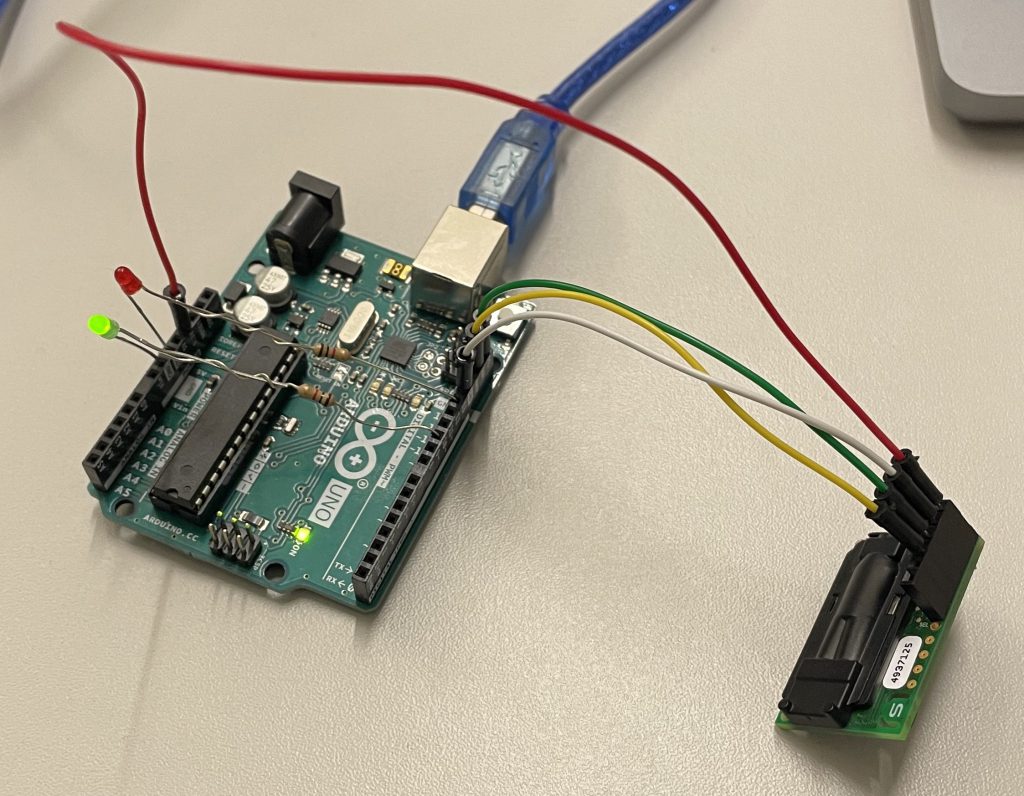During the covid pandemic, occupancy in rooms had to be kept to a minimum. It can be difficult to accurately monitor the occupancy of a space, especially when the room is large. CO2 levels in the air in a room can be used as a proxy for occupancy, with values of over 800 parts per million (ppm) considered high.
Many offices, schools and other places with large groups of people installed CO2 sensors in many of their rooms to monitor the levels of CO2 as these places began to reopen with social distancing protocols in place.
As well as being a good metric to assess social distancing, CO2 levels above 800ppm have been shown to impair brain activity, so monitoring the levels is a useful endeavour.
We wanted to create a low cost, easy to make CO2 sensor that could simply and effectively monitor the CO2 levels in a room, and provide visual indication when action needs to be taken, such as opening a window or door to promote fresh air flow.
The sensor assembly we designed made use of the SCD30 CO2 sensor, a readily available and well documented sensor. It used an Arduino Uno, two LEDs and some wires to create a streamlined and simple solution.

The red and green LEDs indicate whether the CO2 level is below a safe level, with the system switching from green to red when the CO2 level climbs above 800ppm.
This streamlined approach with minimal parts should make it quick and simple to create multiple of these sensors for an organisation.
Housing for the sensor can also be easily fabricated, with the only requirements being a cutout next to the sensor to allow for air ingress. The housing could look something like this!
The documentation for this project, including the Arduino code can be found on the DMF Github for project clean access.
